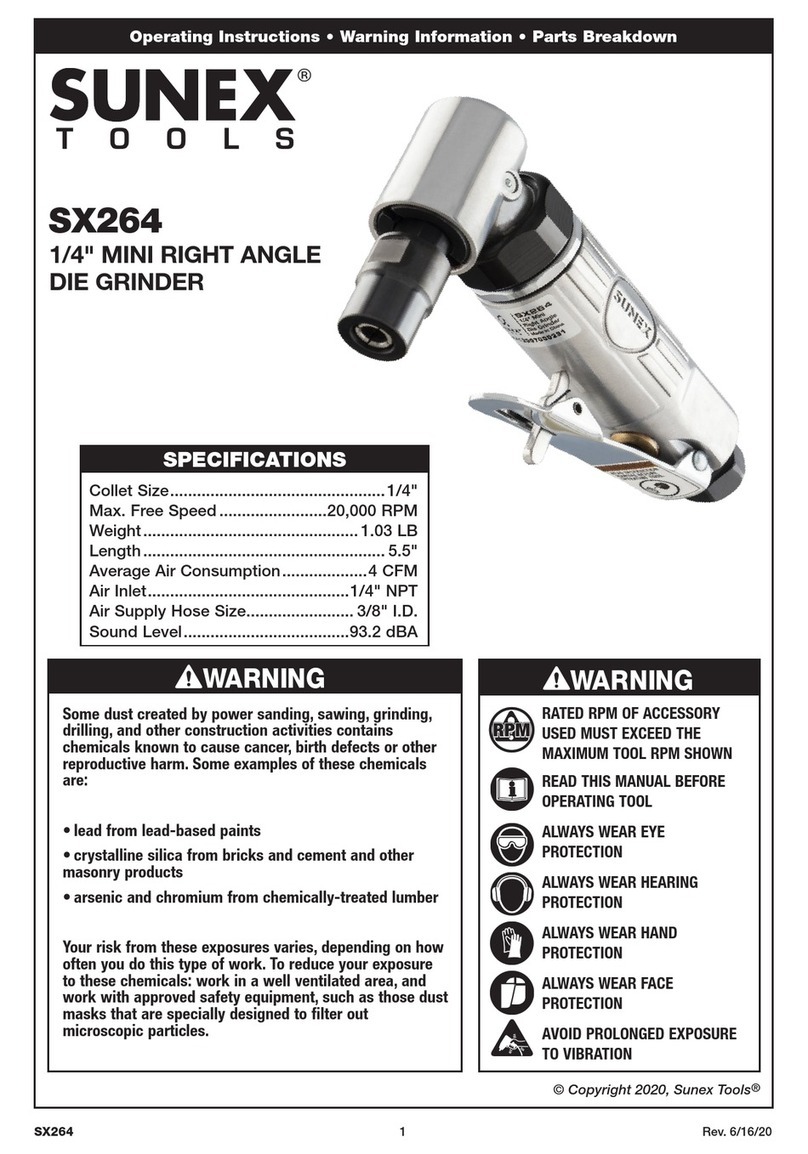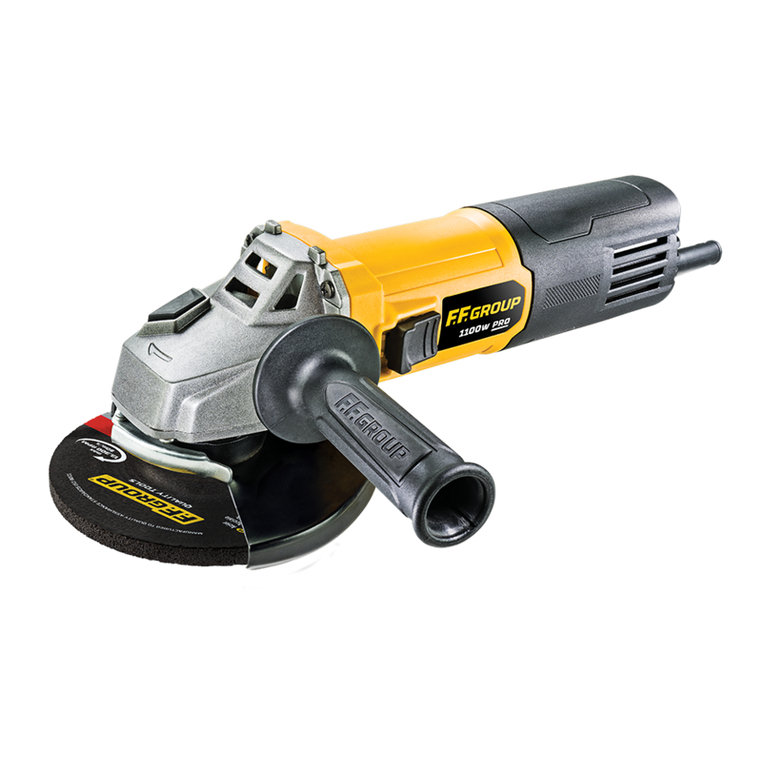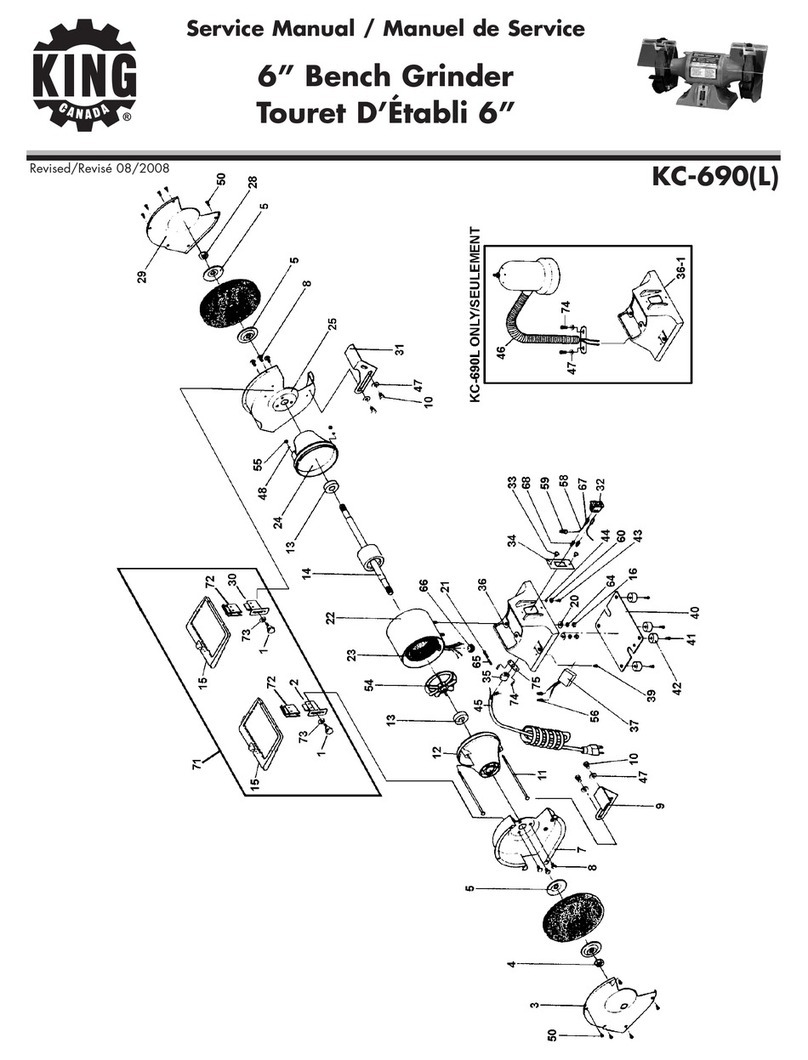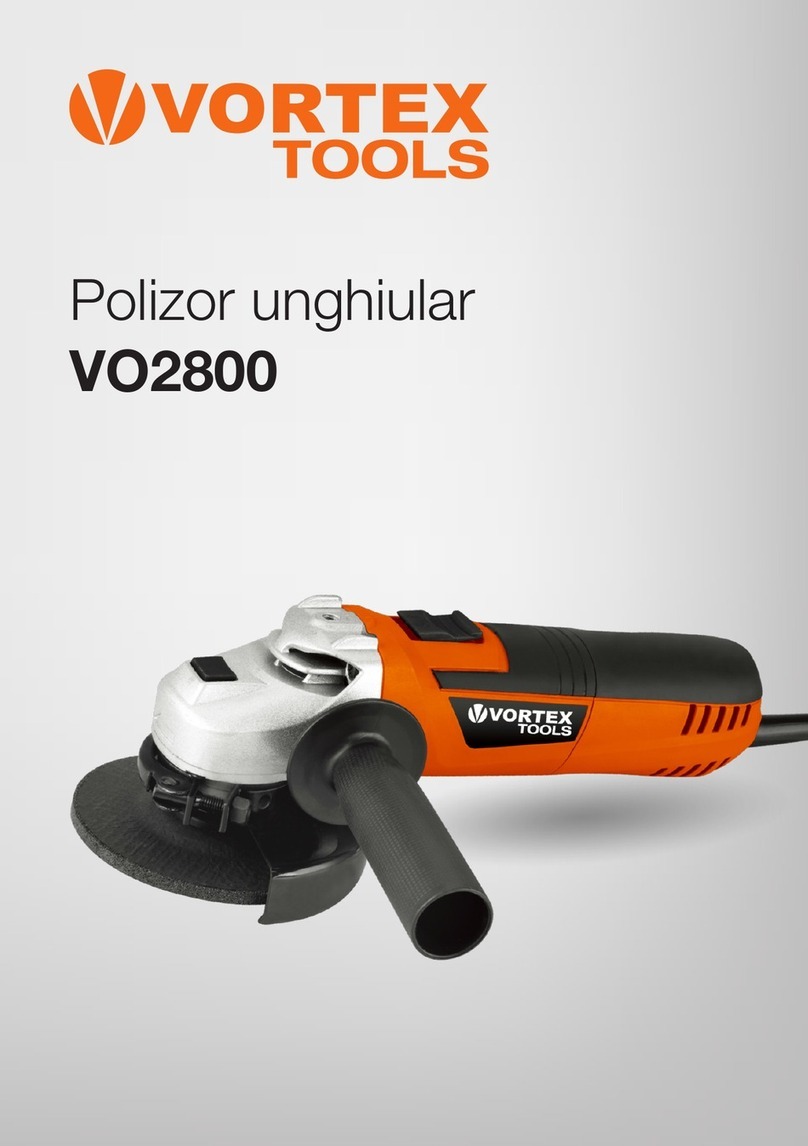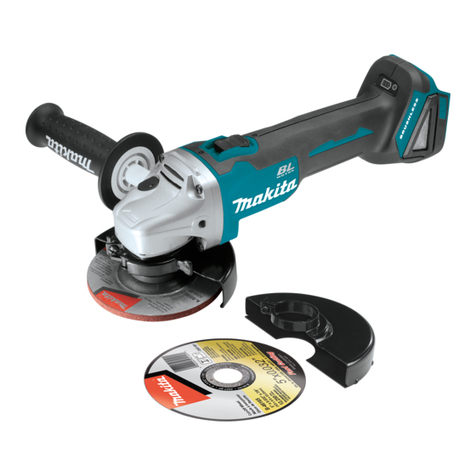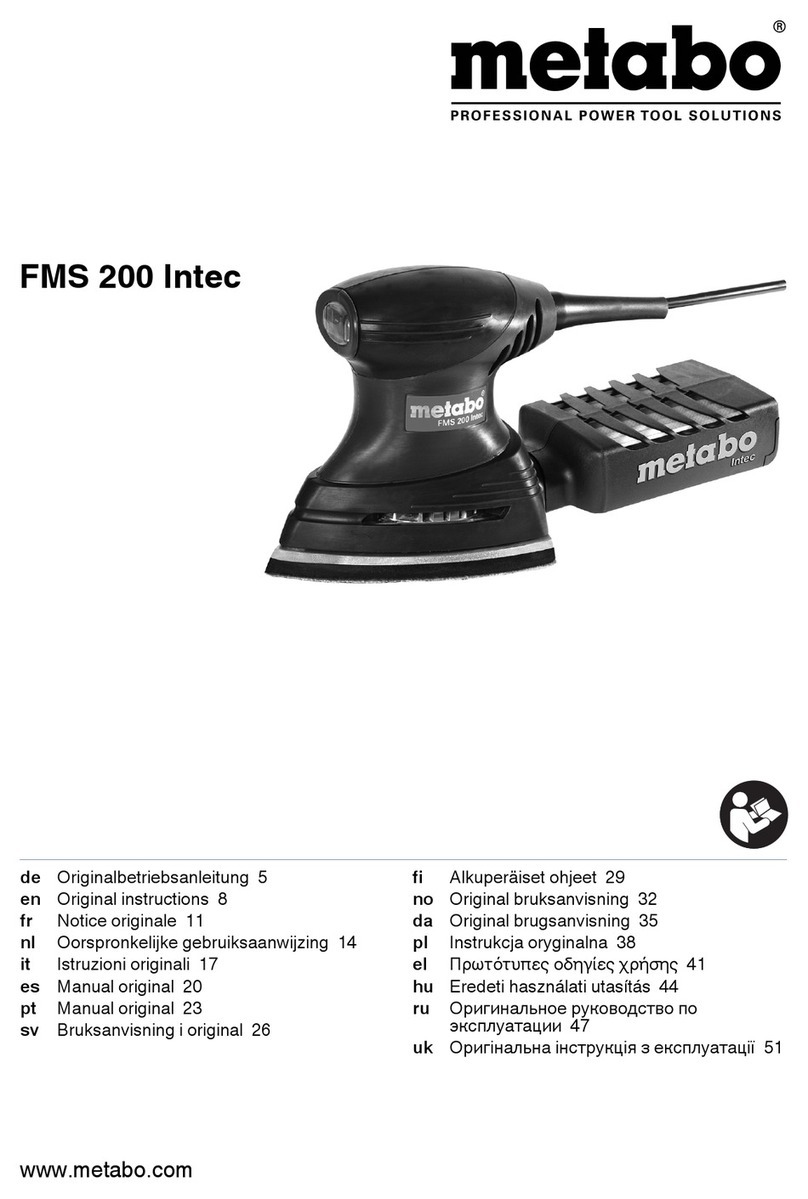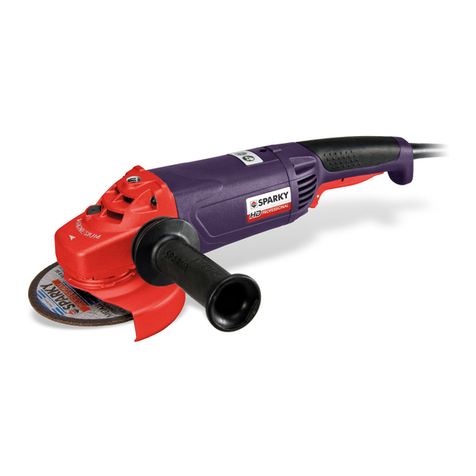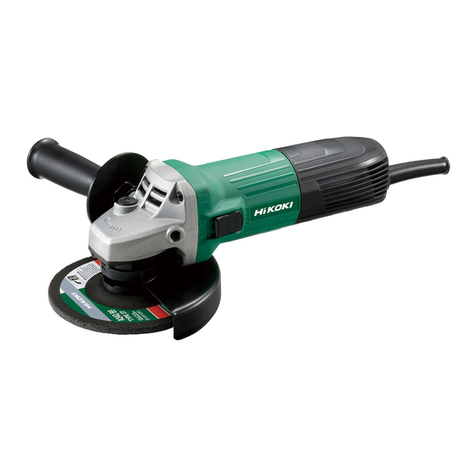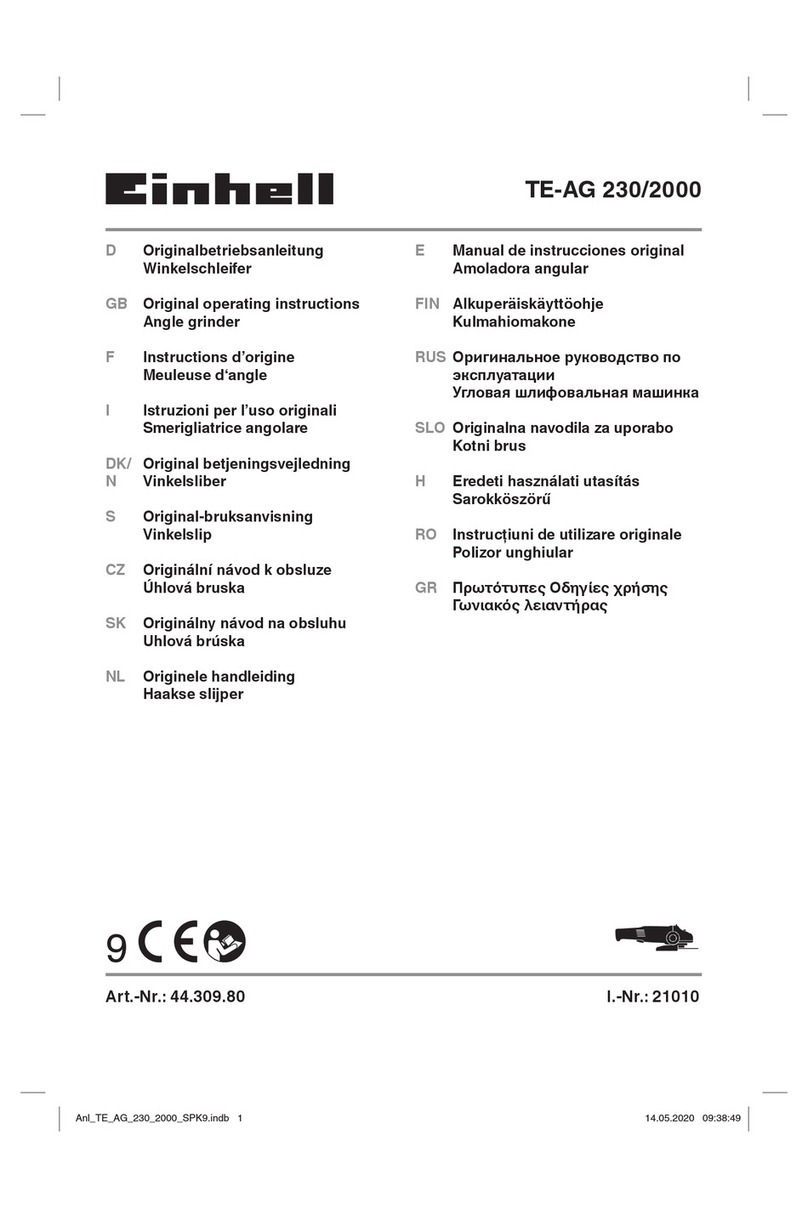Batkovic-Alati Meli94H/V User manual

1
BELTGINDER INSTRUCTION
Meli94H/V and Cile1400xl
Model Meli94H/V
Model Cile1400xl
© Batkovic-alati d.o.o. www.batkovic-alati.hr
Englisch - Original operating instructions
Read the operating instructions carefully before putting the machine into
operation

2
USER MANUAL
Table of contents
1 About this manual
1.1 General information
1.2 Characters and symbols used
1.3 Design of the warning notices
1.4 Technical terms and abbreviations used
2 General safety regulations
2.1 Principles
2.2 Intended Use 1
Default
Features of the Standard Structure
Additional equipment
Positions of additional equipment
2.3 Foreseeable misuse
2.4 Selection and qualification of personnel
2.5 Workstations for operating personnel
2.6 Safety Devices
Position of the safety devices
Function of safety devices
Fire protection
2.7 Protective measures
Personal protective equipment
2.8 Safety Instructions
General remarks
Safety symbol
For transport
For assembly
Before commissioning
During operation
Maintenance and repair work
For disassembly
Removal
Structural changes
2.9 Residual risks

3
3 Technical description
3.1 Overview
Functional description
Structure of the machine
3.2 Variant 1
Design of the variant
Function of the variant
3.3 Variant 2
Design of the variant
Function of the variant
3.4 Properties of the tools
3.5 Nameplate
4 Transport and storage
4.1 Transportation
Requirements for the installation site
Transportation
For transport
Transport of the machine
Unpacking the machine
4.2 Storage
Requirements for the storage location
Preparation of the machine
5 Installation and Commissioning
5.1 Installation 2
Required tools
Safety precautions before installation
Carrying out the installation
Delivery of deliveries
5.2 Commissioning
6 Setting up the machine

4
7 Operating and display elements
7.1 Overview and position
7.2 Construction
7.3 Function
7.4 Notes on the remote controls
8 Operation of the machine
8.1 Model
8.2 Switching on the device
8.3 Operation of the machine
8.4 Switching off the device
9 Troubleshooting help
9.1 Procedure for errors or mistakes
9.2 Troubleshooting
10 Maintenance work for technical personnel
10.1 General information
10.2 Maintenance schedule
10.3 Carrying out maintenance work
10.4 Checking the safety devices
11 Disassembly and disassembly
11.1 General information
11.2 Decommissioning
11.3 Disassembly
11.4 Disposal and Recycling
12 Technical data
13 Notes
13.1 Service addresses
13.2 Spare and wear parts
13.3 Auxiliary and operating resources
13.4 Drawings
13.5 Diagrams
13.6 Parts lists
13.7 Declaration of conformity

5
1 About this manual
1.1 General information
WARNING: Read the instruction manual to reduce the risk of injury.
You bought a belt grinder. Before you put this machine into operation, you must
read these safety notes and instructions carefully so that you can properly
assemble, use, commission, start, stop and maintain the machine. Make sure that
you are familiar with the machine controls and you can operate the machine
properly. Improper use of the machine may result in injury.
Always remember your safety and that of others. This equipment is intended for
private and professional use. As with all machines, this machine also carries
dangers when carrying out work. Proper operation limits these risks. If you do not
comply with the safety regulations, risks are unavoidable. Observe the safety
regulations.
The design of the machine and accessories must not be changed in any way. In this
case, this is done exclusively at the user's own risk.
Keep these operating instructions in a safe place. The manufacturer and seller are
not liable for damage to property or financial losses resulting from non-observance
of these operating instructions.
KEEP THIS MANUAL FOR FUTURE REFERENCE.

6
1.2 Signs and symbols used
General
Read this manual carefully to avoid problems and the risk of injury.
Indicates the risk of electric shock.
Hazard, warning, caution
Indicates a fire hazard.
Ground on power grids and connections
Indicates the risk of explosion
Keep unauthorised persons and bystanders at a distance.
DANGER
Indicates the risk of entrapment and injury. No work gloves with
rotating parts. Wear suitable work clothing. Do not wear loose
clothing, gloves, scarves, rings, necklaces, bracelets or jewellery or
any other clothing that may become entangled in rotating parts.
Wear a hair net for long hair.
NOTICE
NOTE: Indicates an action that, if not avoided, could result in injury,
can lead to damage to the goods.

7
Personal safety
Wear protective goggles
Wear a mouth hood or dust mask.
Wear hearing protection
Wear shoes with rubber soles.
With regard to the markings on the machine
The following symbols are shown on the machine.
DANGER
Indicates the risk of entrapment and injury. Do not bring work
gloves into contact with rotating parts. Wear suitable work
clothing. Do not wear loose clothing, gloves, scarves, rings,
necklaces, bracelets or jewellery or any other clothing that may
become entangled in rotating parts. Wear a hair net for long hair.

8
1.3 Design of warning notices
Definitions: Security policies. The following definitions describe the severity for
each signal word. Please read the manual and observe these symbols.
DANGER: Indicates an imminently hazardous situation which,
if not avoided, will result in death or serious injury.
WARNING: Indicates a potentially hazardous situation which,
if not avoided, could result in death or serious injury.
CAUTION: Indicates a potentially hazardous situation which,
if not avoided, could result in minor or moderate injury.
NOTE
NOTE: Indicates an action which, if not avoided, may result in
injury to, or damage to, the product.
1.4 Technical terms and abbreviations used
V
Volts
W
Watt

9
2 General safety regulations
2.1 Principles
General information
1. read the operating instructions carefully before putting the machine into
operation.
2. do not change or remove guards, etc.
3. electrically driven machines equipped with a plug must always be connected to a
grounded socket.
4. loose handles or control buttons must always be fastened. Make it a habit to
always check the machine before use.
5. Keep the workplace clean. A messy workplace increases the risk.
6.
DANGER
The machine must not be installed in a dangerous
environment, i.e. in damp, poorly lit or wet rooms. Do not
expose the machine to rain. Ensure good lighting at the
workplace.
7.
Keep children and unauthorised persons away from the
machine. Keep them in a safe distance from the machine.
8. ensure that the workshop is not accessible to unauthorised persons. Install
safety interlocks in the form of sliding locks, lockable main switches, etc.
9 Never overload the machine. The machine is at its best when used correctly.
10. Use the machine only for the work for which it was made.
11.
DANGER
Wear the correct work clothing. Do not wear loose clothing,
gloves, scarves, rings, chains,

10
12. always wear safety glasses and follow the safety instructions. A dust mask is
recommended for dusty work.
14. always pay attention to your balance.
15. Always keep the machine in optimum condition. Keep the machine clean. Read
the manual carefully and follow the instructions for changing wheels and
accessories.
16. make sure that the belt is correctly positioned and cannot run off before
putting it into operation.
17. Disconnect the machine from the power supply before carrying out any
maintenance or replacement work on the machine.
18. use only the prescribed accessories. See manual. The use of improper
accessories can entail risks.
19. Make sure that the machine cannot start suddenly. Always check that the
on/off switch is in the OFF position.
21. Check the parts for damage. If there are damaged parts, replace or repair them
immediately.
22. never leave the machine unattended while it is running. Always switch off the
machine and wait until it has come to a complete stop.
23 Never operate the machine when under the influence of alcohol, medication or
drugs.
24. Do not make any changes to electrical equipment, motors, switches, etc.
24. Do not make any changes to the machine, such as the frame, motor, support
arms, belt adjustment mechanism, drive wheel and rollers.
25. Keep the original packaging for transportation or installation of the machine.
27. do not use the machine if defects are found.
28. Have repairs carried out by a specialist only. Do not repair the machine yourself
and do not change any settings.
29 Check the machine before use.

11
Electrical safety
WARNING There is a risk of electric shock when working with power
tools.
General safety instructions for power tools
WARNING Read all safety instructions and instructions. Failure to
follow these instructions may result in electric shock, fire or serious
injury.
1 Never use the unit with a damaged cable.
2 Have a damaged cable replaced only by a specialist.
3 Do not use extension cords.
4 Before each use, check the power cord and the plug.
5 Unplug the power cord from the outlet when replacing, servicing, and cleaning
attachments and abrasive belts.
6 Protect the cable from heat, oil and sharp edges.
7 Never pull on the cable to move the machine.
8 The machine must only be connected to a properly earthed socket with a fuse of
sufficient current. If you are not sure, contact an electrician.
9 When used outdoors, the machine must be connected via a residual current
circuit breaker.
10 Never open the housing of the electric motor.
11 Do not leave the machine outdoors.
12 When using the machine, avoid direct contact with earthed objects such as
metal pipes, radiators, stoves and refrigerators.
13 Do not use the machine in the rain or in a humid environment.
14 Never immerse the machine and/or the motor housing in liquid.
15 Do not use the machine if defects are found.
16 Have repairs carried out by a specialist only. Do not adjust the machine yourself
and do not change any settings.
17 Check the machine before use.
18 Keep the cable away from heat, oil, sharp edges or moving parts.

12
19 Plugs of power tools may only be used in a suitable socket. Do not change the
plug in any way. Do not use adapter plugs with an earthed power tool. Unchanged
plugs and suitable sockets reduce the risk of electric shock.
20 Avoid contact of the body with earthed surfaces such as pipes, radiators, stoves
and refrigerators. There is an increased risk of electric shock if the body is earthed.
21 Do not expose power tools to rain or water. If water gets into power tools, the
risk of electric shock increases.
23 Do not use the cable incorrectly. Never use the cable to move, pull, or
disconnect a power tool.
24 Damaged or tangled cables increase the risk of electric shock.
25 Do not use the machine outdoors or in damp areas.
26 When using the machine, observe the local safety regulations regarding fire
hazard, danger of electric shock and risk of injury.
27 This equipment must be connected to an earthed power supply.
28 Always check that the mains voltage corresponds to the value on the type plate.
29 The electric motor is only designed for the specified voltage. Always check that
the voltage matches the voltage on the nameplate on the motor.
30 If the power cord is damaged, let an electrician replace it.
31 Never use an extension cord.
DANGER
Do not use the power tool if the switch does not turn it on and off.
Any tool that cannot be operated with the switch is dangerous and
must be repaired.
32 Disconnect the plug of the power tool from the power source, before making
any adjustments, changing any accessories, or storing the power tool. Such
preventive safety measures reduce the risk of accidental activation of the power
tool.

13
DANGER reading points 32, 33 and 34.
32 Use the power tool, attachments, etc. according to this manual.
Instructions taking into account the working conditions and the work to be carried
out. The use of the power tool for other than the intended use can lead to a
dangerous situation.
33 Maintenance of power tools. Check for misalignment or
Missing or uneven running of moving parts, broken parts or other objects.
Conditions which may affect the operation of the power tool. If the power tool is
damaged, have it repaired before use. Many accidents are caused by poorly
maintained power tools.
34 Keep unused power tools out of reach of children and do not allow persons
unfamiliar with the power tool or this manual to use the power tool. Power tools
are dangerous in the hands of inexperienced users.

14
Electrical connections
WARNING There is a risk of electric shock when working with power
tools.
WARNING: Make sure the switch is in the OFF ("0") position before
connecting or disconnecting the machine.
Connection to the power supply, disconnection and earthing is made via the
supplied cable and switch. For safety reasons, it must not be replaced by another
type of plug.
The total length of the wiring between fuse and terminal must not exceed 1.5
meters.
Before connecting, check that the electrical data (voltage, frequency and number
of phases) of the machine and the mains correspond. Contact an electrician.
Make sure that the machine is voltage free before carrying out maintenance and
cleaning work and before changing attachments or tilting the machine (only for
Meli94H/V variant).

15
2.2 Intended Use
WARNING
Never modify the (electric) tool or any part of it. This may result in
damage or injury.
DANGER
DO NOT use POWER TOOLS in wet conditions or in the
presence of flammable liquids or gases.
DO NOT allow children to come into contact with the
machine. Keep children and unauthorized persons
away from the machine. They should always be kept at
a safe distance from the machine. If inexperienced
operators operate this tool, supervision is required.
PURPOSE OF USE
Your belt grinder is designed for grinding wood, metal and plastic in a professional
and private environment. Use only the specified parts for grinding.
Do not change the machine or the attachments.

16
These risks may occur when using the machine.
DANGER
Indicates an imminently hazardous situation which, if not avoided,
could result in serious injury.
CAUTION
Use the machine for its intended purpose only, as otherwise it may
cause minor or moderate injuries if ignored.
WARNING
Never make changes to the machine or any part of the machine.
This may result in damage or injury.
DANGER OF CRUSHING
If the instructions in the manuals and on the machine are not
followed, The use of the machine carries the risk of hands being
trapped.
EXPLOSION HAZARD
DO NOT use the belt grinder in the presence of flammable liquids or
gases.
FIRE HAZARD
DO NOT use the belt grinder in the presence of flammable
materials.
KEEP UNAUTHORIZED PERSONS AT A DISTANCE.
These grinding machines are machine tools. DO NOT allow children
to come into contact with the machine. If inexperienced operators
operate this tool, supervision is required.
ELECTRIC SHOCK
DO NOT use the belt grinder under wet conditions.

17
2.3 Avoidance of misuse
Do not switch on the machine when tools or other objects touch the abrasive belt.
Do not switch on the machine until all controls and attachments have been fixed.
Do not switch on the machine until you have checked that the belt is the correct
size, that it is not damaged, that the belt is straight on the drive roller and rollers,
that the tension is adjusted, and that the belt is not jammed or touching anything.
Only use abrasive belts for these machines.
Use the machine only for grinding with belts of the correct size. Only use belts that
are suitable in width and length and make sure that the belts are properly fitted.
Grind only metal, wood, hard plastic. Do not use this machine for other materials.
Caution: Some metals and woods can be harmful to health and are a risk during
grinding.
Grind only in the designated areas of the machine and never in other areas.
When the abrasive belt is running, no sharp parts must be placed against the belt.
There is then a risk of the belt tearing.
Only use attachments that belong to this machine and are supplied by the
manufacturer. Do not modify the machine or attachments.
Do not install any attachments when the machine is in operation or powered.
Do not place objects or body parts in the space between the worktop and the
abrasive belt.
Never tilt the machine while it is in operation.

18
DANGER Do not insert hands or objects inside the wheels and rollers.
Do not insert any objects, hands or other parts of the body into the
interior of the abrasive belts in any variation or position, with or
without attachments.
Never touch a rotating belt.

19
xxDo not insert sharp objects into the rotating belt. Do not insert sharp, pointed,
angular objects into the belt and do not work against the direction of rotation of
the belt.
Do not use water or other liquids or additives of any kind when grinding.
Materials may become hot during grinding. Do not place hot materials on, in or
near flammable materials and do not touch hot materials.
Do not leave any (Allen-) keys in the cylinder head screws of the attachments after
replacement. Do not leave any materials on the machine or on the attachments, as
switching on the machine can lead to injury and/or damage.
xxNever attach the worktop a) to the support arm b) or the worktop b) to the
support arm a). Only install and use attachments as indicated.
Always attach the worktop to the support arm using two cylinder head screws,
never one.
Mount only 1 attachment next to the worktops on the support arm b). So only 1
roller of the roller set or only the large wheel. Never use several rotating
attachments at the same time.
Tilted machine: Never support the handle on a loose and non-fixed surface. Always
tilt the machine completely until the handle lies on a surface that is firmly attached
to the worktable.
Do not work with the machine in an tilted position when the motor comes into
contact with the worktable or elsewhere.
Do not operate the machine if the tilted position is not horizontal.
Never place and adjust the abrasive belts in an tilted position, as the adjustment
knob of the belt wheel is not easily accessible and the abrasive belt can be
touched. This should be avoided as unexpected switching on of the machine may
result in injuries.

20
2.5 Workplaces for the operating personnel
Workplaces must be equipped in accordance with applicable laws and regulations,
such as safe, well-lit, vibration-free work tables, no slippery floors, no moisture.
2.6 Workshop safety equipment
The (general) safety regulations must be in place and comply with the applicable
laws and regulations.
The position of the safety devices must be in accordance with the applicable laws
and regulations.
The function of safety devices is known to the user. Fire protection: During
grinding, the abrasive belt and the materials to be processed can become hot and
sparks can spread. The workplaces must be designed in accordance with the
applicable fire protection requirements.
2.7 Protective measures
Wear personal protective equipment. Keep bystanders at a distance. Provide
personal protective equipment as shown in the following table. Use protective
equipment. The use of safety equipment such as safety goggles, dust mask, hearing
protection and non-slip safety shoes with rubber soles reduces the risk of injury.
Keep bystanders at a distance
Always wear safety glasses!
Wear a mouth hood or dust mask.
Wear hearing protection
This manual suits for next models
1
Table of contents

